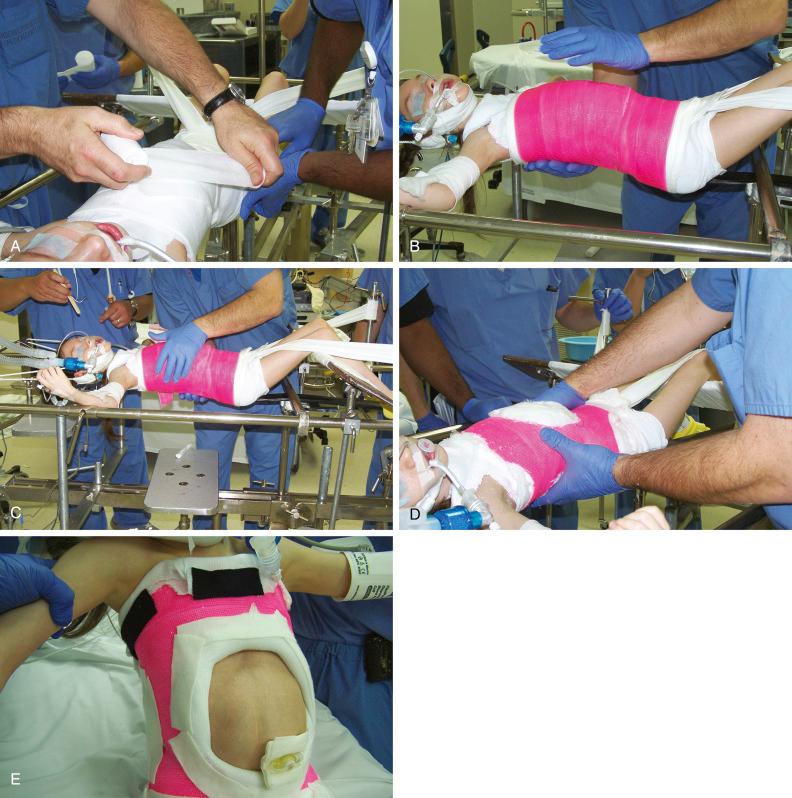Physical Address
304 North Cardinal St.
Dorchester Center, MA 02124
Immobilization in a cast has been the standard of care for spinal and upper and lower extremity injuries and fractures in children. Techniques were first described in antiquity, and they used a variety of hardening agents. Until the 1900s, plaster-impregnated bandages were used. Today’s more common casting material is fiberglass in various forms; it shares some of the same properties of plaster of Paris but is an improvement in other respects.
Casting techniques have evolved over the years. Unfortunately, complications still do occur but can be avoided with careful attention to detail.
Some variation of a body cast can be used to treat spinal fractures in children, of which the most common is a flexion (seat belt) injury treated with a hyperextension cast. Spica hip casting can be used to treat pelvic or femoral fractures. Long arm and short arm casts are routinely used to treat upper extremity fractures from the elbow to the wrist, and long leg and short leg casts are used for fractures of the lower extremities.
Adequate cast padding is three to five layers thick.
Extra layers should be applied on bony prominences.
The cast should be molded to fit the anatomy.
Warm water should be used during application.
A stretch-relaxation technique should be used for fiberglass casting materials.
Three-point molding is necessary for long bone fractures.
The joint should be immobilized in a position to help hold the reduction.
The use of fiberglass body casts has dwindled with the increasing use of patient-specific molded braces (thoracic-lumbar-sacral orthoses [TLSOs]) in the treatment of spinal fractures in children. Stable burst fractures, bony Chance fractures, and other stable injuries of the spine in children can typically be treated with body casts and hyperextension molds. These are best applied on a Risser table, which allows total access to the torso for casting. As with all casting techniques, attention to padding over the bony prominences is important for prevention of pressure ulcers. The typical fiberglass cast has cutouts for the abdomen to allow abdominal distention after eating, as well as molding over the iliac crests to prevent the cast from moving up and down on the patient. Curved cutouts to allow the thighs to flex on the abdomen to at least 90 degrees are also created and well padded. All edges of the body jacket are padded with moleskin, moleskin-like material, or folded stockinette that covers the skin ( Fig. 3.1 ).

Become a Clinical Tree membership for Full access and enjoy Unlimited articles
If you are a member. Log in here